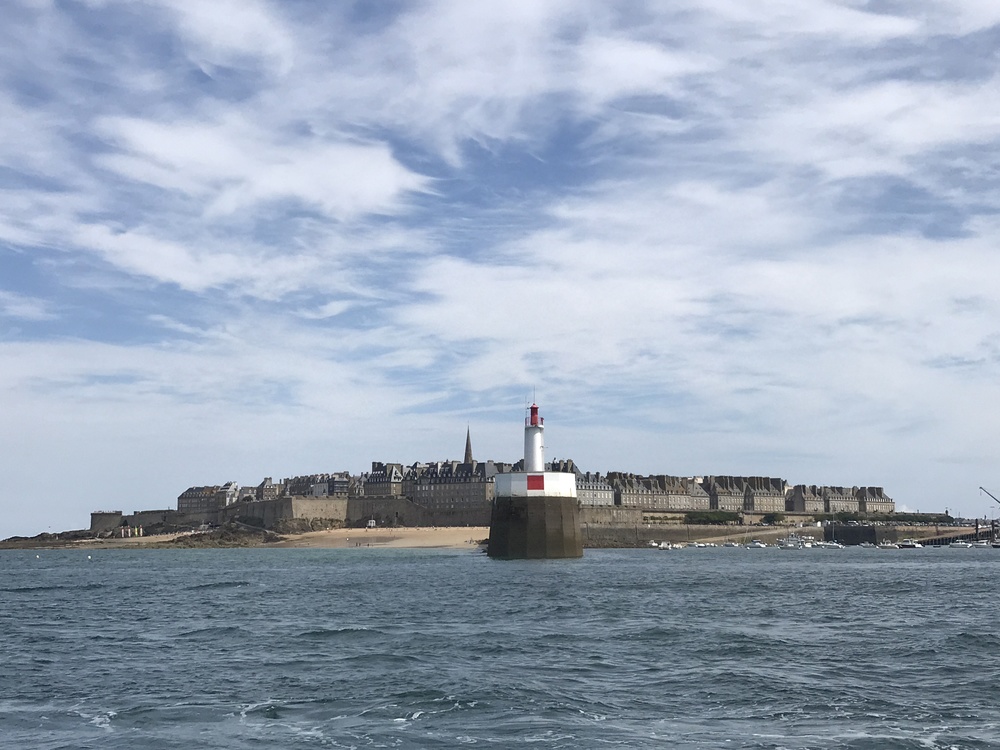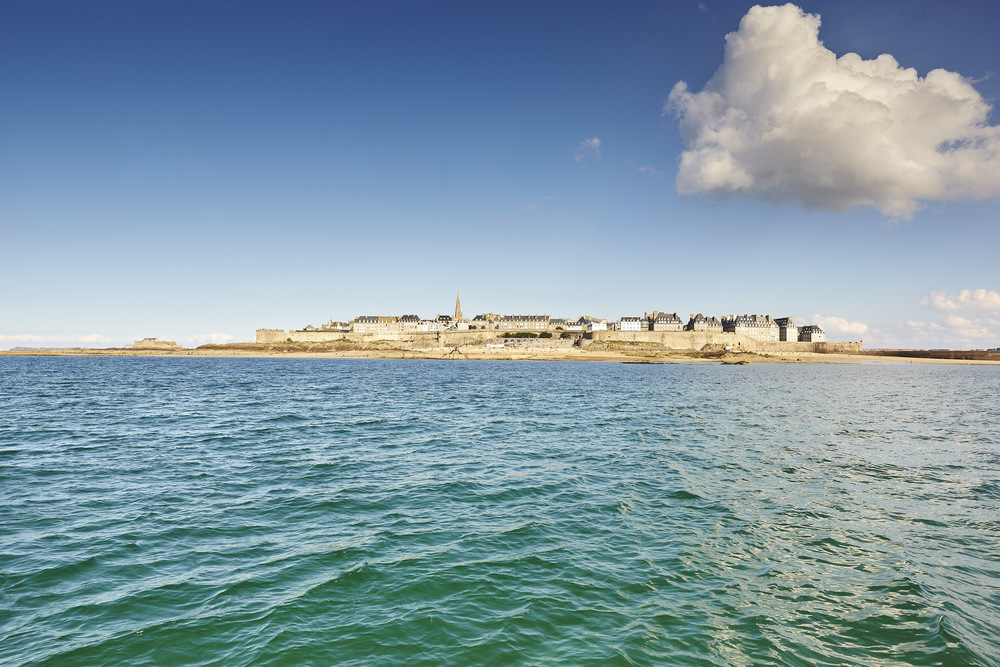A real landmark, not far from the Bay of Mont-Saint-Michel, Saint-Malo is full of history, both in its built heritage and its port. Pirates, ship owners, Newfoundlanders, abbots and parishes have contributed to the history of Saint-Malo …
Saint-Malo stretches from the mouth of the Rance River to the Havre du Lupin. Since 1967, with the merger of the three former communes of Saint-Servan, Paramé and Saint-Malo, Greater Saint-Malo has become a city of nearly 50,000 inhabitants.
A rock in the middle of the water
This city, so popular with visitors, was originally a simple hermitage inhabited by Aaron, whose chapel can be seen at the highest point of the rock.
Having come to evangelise Armorique in the 6th century, Saint-Malo owes its name to a Welsh monk “Mac Low”. The latter settled on Alet Rock, facing Aaron’s Rock. In order to fight against invasions, the isolated islet was soon fortified, and in the following centuries became an independent maritime city. “Ni français, ni breton, Malouin suis!” (Neither French nor Breton, I am Malouin!) This is the town’s motto.
The city’s expansion over time
Tired of having to rebuild his church, Jean de Chatillon transferred the episcopal headquarters of Alet to Aaron’s Rock in August 1152, which had become an island at high tide since the terrible, but nevertheless legendary, tidal wave of March 709. This rock then became the asylum of poor fishermen, then of wealthier families, the bourgeoisie and nobles, until finally becoming the bastion of the “Gentlemen of Saint-Malo”: so named because their fabulous wealth allowed them to lend money to the King of France. Their houses, many of which are classified as Historic Monuments, are still visible within the city – with their mansions – and in the surrounding countryside, where we can see the “malouinières”: large properties built by these merchants in the 17th and 18th centuries.
Led by Bienheureux Jean de la Grille, and in the shadow of its magnificent Saint Vincent Cathedral, the city was transformed into a hub of European maritime trade, becoming so powerful that the Malouins proclaimed themselves a Republic – like the Venice Serenissima – and declared their independence from the crown in 1590. The episode lasted only four years, but it is from this period that the “neither French nor Breton, I am Malouin” motto is derived.

Growth – Sail-making – Resort
The parish of Saint-Servan is home to many rope factories, sailing factories and shipyards, and dedicates itself to the sea. Paramé, a more verdant town, was home to a few country houses or “vide-bouteilles” held by the rich Malouin merchants, and served as a resort parish.
In 1689, the King instructed Vauban to erect a ring of fire around the city; the forts of La Conchée, Harbour, Petit Bé and National were therefore constructed and contributed to making Saint-Malo impregnable to enemy ships.
In 1708, the old city suffocated behind its mediaeval ramparts and gained an initial extension, followed by three others over the years, which would give it its current appearance. One of these extensions bears the evocative name of “Californie”. It is home to some of the most beautiful mansions from the 18th century.
A city of illustrious men
Saint-Malo, a city of Art and History, synonymous with dreams, adventure and travel, remains the birthplace of great men: Chateaubriand, the Romantic whose tomb facing the open sea can be visited at low tide; the privateers Robert Surcouf and René Duguay-Trouin; Jacques Cartier and his manor house, recounting his journey in Canada. And though the city suffered during the liberation in August 1944, with 80% of its buildings destroyed, it was able to rise again from its ashes and keep its authentic look with work led by the architect Louis Arretche and the mayor Guy la Chambre, who strived to ensure a historical reconstruction of the city, though it was financially impossible to rebuild it identically.
Land of events
Saint-Malo is also at the heart of Europe’s largest tides, and hosts major cultural and maritime events: the Tall Ships’ Race, Etonnants Voyageurs (Amazing Travellers), The Route du Rhum, The Quai des Bulles festival, Transat Québec – Saint-Malo, The World Folk Festival, and the Route du Rock. The arrival of the TGV high-speed railway, which put the city just 2h17 from the capital, has made this a modern city, well established in the 21st century and the third millennium.
If you have any question, please contact the Tourist Office Saint-Malo Baie du Mont Saint-Michel
+33 (0) 825 135 200 (0.15€ per min)
www.saint-malo-tourisme.com













